Muster Dogs exclusive extract: Why farmers are going back to dogs and what your choice of breed means
TV surprise smash-hit Muster Dogs is back. In this exclusive accompanying book extract, host Lisa Millar reveals why farmers are returning to pooch-power and asks one key question.
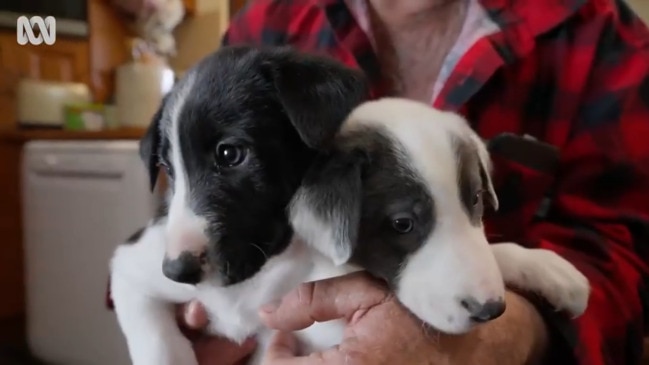
Books & Magazines
Don't miss out on the headlines from Books & Magazines. Followed categories will be added to My News.
Muster Dogs was an unexpected TV smash hit, introducing Aussies to the cutest country canines. Now the ABC show is back for a second season – and host LISA MILLAR has written a book as well. In this exclusive extract she examines why so many farmers are turning back to old-fashioned puppy-power and asks the big question: kelpies or collies?
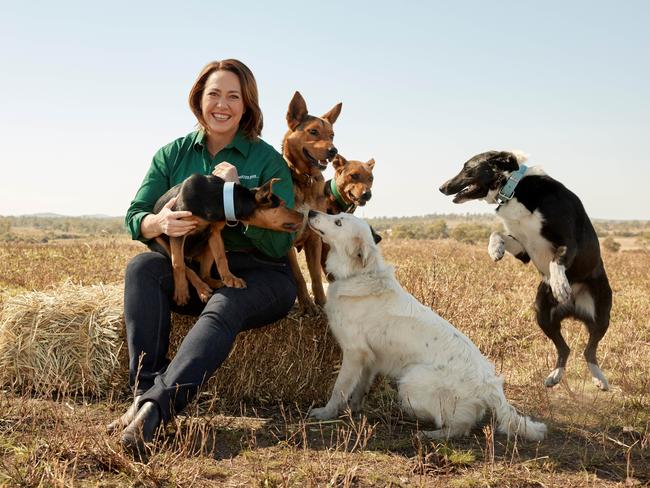
About five minutes into the trip to the Fowlers’ sheep paddocks for series two of Muster Dogs, I make my first mistake. I’m sitting in the front of the ute with my neck twisted towards the back to face Rosie, who is telling me a story about the farm’s history while also trying to calm her crying ten-month-old daughter, Milly.
Her husband, Russ, pulls on the handbrake and jumps out of the driver’s seat to open a gate, and as he swings it wide and sprints back to the car, it dawns on me: I’ve failed Farm Etiquette 101.
There are two unassailable rules on farms: leave gates the way you find them; and if you’re the front passenger you jump out quick to be the one to open them.
So I vow to get all the following gates – and because they’ve got about 18,500 sheep and 100 paddocks on their properties that they either own or lease, that’s a lot of gates.
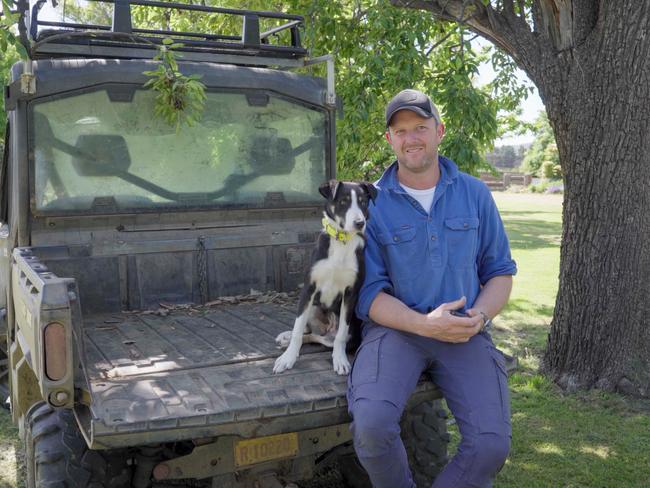
Molly, our Muster Dogs Series Two border collie, is in the back of the ute on the day I visit the Fowlers, along with Chief, an eight-year-old huntaway, and Ted, a four-year-old kelpie, and they’re busting to get to work. They’re tired of the stop – start progress of our property tour and by the time we get to a paddock full of ewes they’re desperate to jump out and round them up.
Chief and Ted do most of the work, moving through a semicircle behind the sheep. Molly, who’s less than a year old when I meet her, is still learning the trade. ‘It’s very rewarding as they grow up and hit different milestones and watching them get something for the first time,’ Russ says. ‘I just love my dogs and they’re a part of me.’ His dogs all have different personalities and different traits. ‘They’re like tools in a toolbox and you need to have lots of different tools to get the job done.’
Huntaways were originally bred as farm dogs in New Zealand, and Russ says his are pretty laid-back. ‘They’re quite happy to sit there and enjoy the day or they’re quite happy to get in there and work. In heavily undulating country they’re really good because they stand up on the top of the hill and they bark and the echo of the bark pushes the animals away from them. Hence, the name huntaway,’ Russ explains. ‘So they push them down to a fence or a creek and that will allow you to drive to a gateway or something like that.’

One of the benefits of working with dogs is that on steep hills you don’t need to use a motorbike or a buggy and so you’re avoiding occupational health and safety risks. Cutting
down on the use of machinery has been one of the prime reasons many farmers are turning to working dogs. It’s safer and cheaper and the stock are calmer.
Aticia Grey from series one of Muster Dogs found the transition to working with dogs so worthwhile that she’ll readily say she’d rather work with them than a bigger team of people. ‘As soon as you add machinery to the equation you’re adding a lot more people around that you need to manage and I really like the idea of it just being a couple of us working, getting the job done with a couple of teams of working dogs,’ she says from her home in Western Australia. She still needs to use helicopters for mustering on her enormous property but she’d like to do that less and less. It might take a little longer with dogs and she’s okay with slowing the process down when she heads out to muster, especially when she sees the cost benefit. ‘You don’t have the cost of machinery, and diesel is not going to get any cheaper. So if we can pull our labour [costs] and our reliance on heavy machinery down, I really think it’s going to improve our lifestyle; it’s just going to make it more enjoyable.’
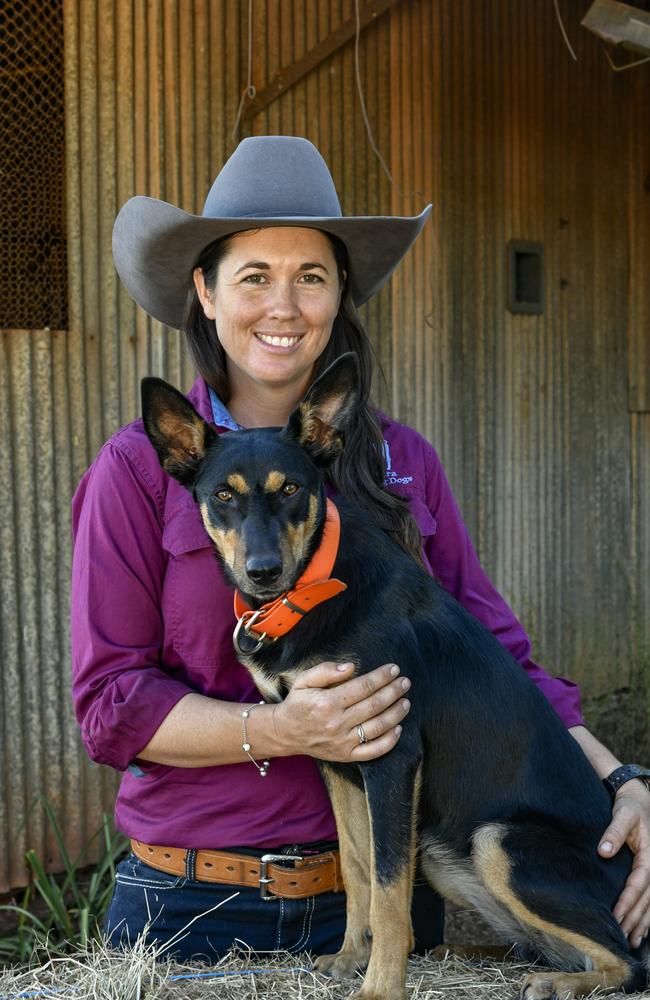
There’s no way of knowing exactly how many working dogs there are in Australia. A report done for government organisation AgriFutures puts the number somewhere between 270,000 and 300,000. The same study revealed that dogs on sheep farms typically work for five hours a day, five days a week during the peak period of shearing, and they typically cover more than 40 kilometres a day, reaching speeds of up to 37 kilometres an hour. The researchers estimated that you get a 5.2-fold return on your investment in a good working dog.
Our tough cattlewoman Joni Hall from series one will take a dog over a human any day. ‘People get distracted, but dogs are very focused on their job. I could love them all they like and say, “Good dog, love you,” and pat them, but they really don’t care, they just want to work,’ she explains in her typically forthright way. ‘You can’t get staff like that, and they can’t complain to HR because I am the human resources department. These dogs cost me about a thousand dollars a year [each] for their keep. They’re quite resilient, they’re not overly offended if you rouse on them, and they have a great effect on livestock.’
Many of the farmers and dog handlers I’ve spoken to believe a good dog is worth a couple of workers. Farmers face increasing costs and tough trade competition with other markets, and the price they’re getting for their product can be out of their control at times. Getting a good dog and training it well can be a wise investment, especially if it helps with productivity.
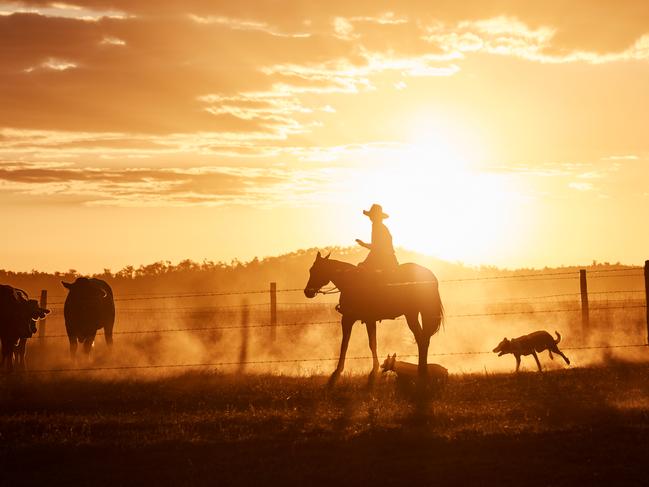
CJ Scotney from series one remembers the first time she watched one man on his quad bike moving 1500 head of cattle with just his dogs. ‘We were gobsmacked,’ she says, explaining the moment she and her husband, Joe, decided that’s how they wanted to run their property as well. ‘The cattle were calm, the manager on his bike was calm, there was just no hoo-haa about it.’ CJ uses her dogs to help rotate cattle through the dense scrub paddocks on their Northern Territory farm, and with the canine team she has, it’s a job that can be done by CJ and Joe alone. ‘We like to put those breeders in this thick bush country to keep the fuel load down so we don’t get those hot fires through there that can really damage the flora and fauna. We couldn’t get them in and out of there without the dogs.’
Farmer and dog trainer Helen McDonald has seen a lot of change in the industry over the decades and it hasn’t necessarily all been good. Back in the day, mustering was done on horseback, but at a certain point horses were replaced by motorbikes and cars. ‘The old guys that were shifting from mustering with horses to doing it with motorbikes and cars were doing it the same way they were doing it with their horses, basically with the motorbike moving at the same speed their horse would have been walking in the past.’
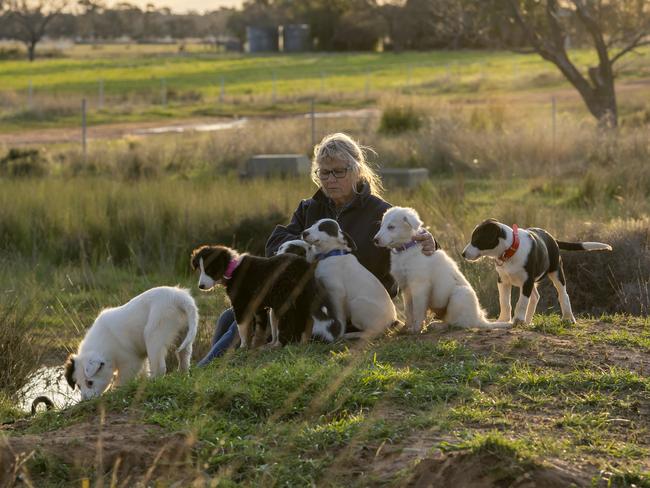
She says sheep want to be mustered calmly and quietly and no farmer would want to see their livestock overheated and scared. ‘But what’s happened is you’ve got the generational change, and their grandkids get out on the bikes and they’ll be just chasing the sheep, seventy or eighty kilometres an hour. They call it “brumby running”. The livestock come in [to the yards] with dust in their wool, leaving their lambs behind and they’re not right in the brain, and [farmers] have a lot of trouble moving them afterwards.’
Mustering with dogs rather than bikes or buggies makes the stock a lot calmer and that brings economic value to a property, but there’s also the loyalty and companionship that working dogs offer their masters – something that has been a constant on the land.
‘They pick up on all the little things, whether you’re having a good day or a bad day,’ Russ Fowler says.
***
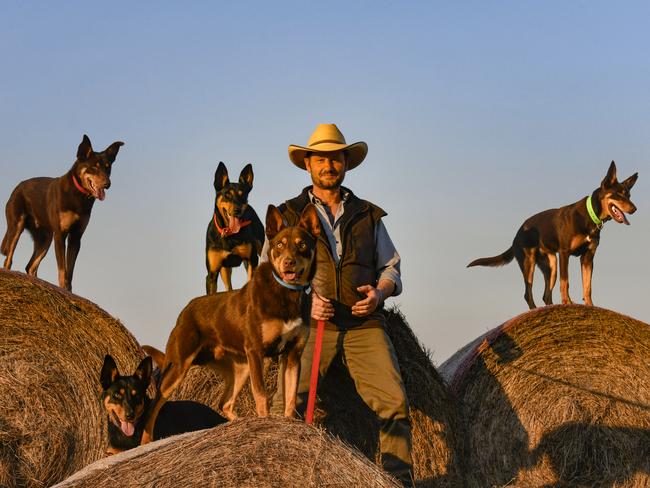
There are plenty of different farm dog breeds: the New Zealand huntaways that Russ Fowler owns; the energetic cattle dogs who might be a little smaller than other farm dogs but sure know how to use their size; and the beautiful white fluffy maremmas from Italy that Aticia Grey has in her mixed team.
But it’s kelpies and collies that make up the majority of working dogs in Australia. Both breeds are intelligent, energetic and independent.
The first border collies were imported to Australia in 1900 from farms along the border of England and Scotland. Kelpies have been around a little longer, and the Victorian town of
Casterton, population 1700, is considered their birthplace.
Breeder, trainer and historian Nancy Withers tells the story of a young Irish bloke called Jack Gleeson, who in 1871 swapped a horse for a black and tan female pup he named Kelpie. The little dog came from the litter of a couple of different breeds of collies from Scotland and was the start of this new breed of Australian working dog. There has been debate over the years about whether kelpies interbred with dingoes, leading to some of them having yellow coats, but a University of Sydney study has ruled that out.

The pups in series one were all kelpies, whereas in series two they were border collies. So which is the better breed?
Our Muster Dogs trainer Neil McDonald puts it like this: ‘What’s better, a Holden or a Ford? Well, it doesn’t matter which one it is, but it’s the model. They used to say you didn’t want a car made on a Monday morning or a Friday afternoon because on a Monday morning the workers might be hungover and on a Friday they’re thinking about knocking off for the
weekend, so you wanted the model made on a Wednesday. It’s not whether they’re kelpies or collies, it’s the family line within the breed that’s important.’
Regardless, Neil is less interested in where the dogs are from and more interested in where they’re going. ‘A lot of effort and energy and ideas and talk go into the dogs’ origins. I reckon that same amount of effort needs to go into “How do we get these dogs going better?” People need to learn to talk to their dogs and not about their dogs.’
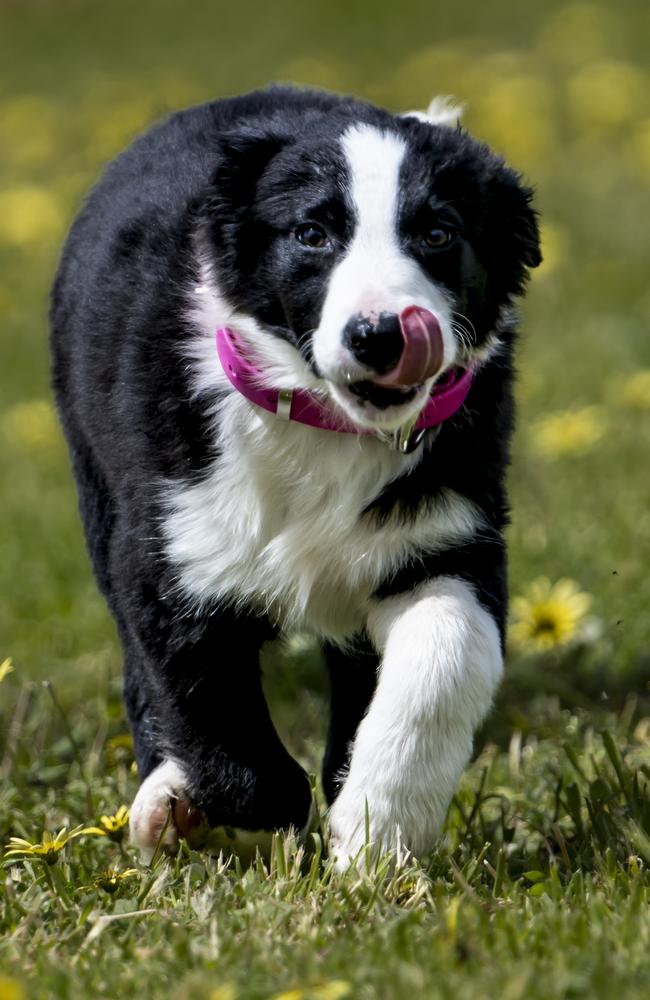
It’s entertaining listening to the breeders and farmers describe the differences between collies and kelpies. Rob Tuncks turns to a car analogy as well. ‘If your car is basically neat, all your tools are in the appropriate places and if you haven’t got stuff on the floor and empty cans rolling around, you’re probably more of a collie person. If your tools are sort of half-arsed and you cannot use the brake properly because there are beer cans getting stuck under the pedals, then you’re probably more of a kelpie person. If you’re like, “She’ll be right, just do it your way, don’t cause the stock any trouble, get to the right spots, don’t bite, bark at the right times, just do it your way and I’ll leave you alone,” then that’s a kelpie. So, kelpies generally don’t like being told what to do very much.
Whereas collies, you can boss them around, you can move them left, move them right, move them in; they love being told what to do. Some days I am a collie person and some days
kelpie – that’s why I have both.’
This is an edited extract fromMuster Dogs: From Pups to Pros by Lisa Millar, published by HarperCollins on January 17, 2024. Series two of Muster Dogs starts on Sunday, January 14, at 7.30pm on ABC TV and ABC iview
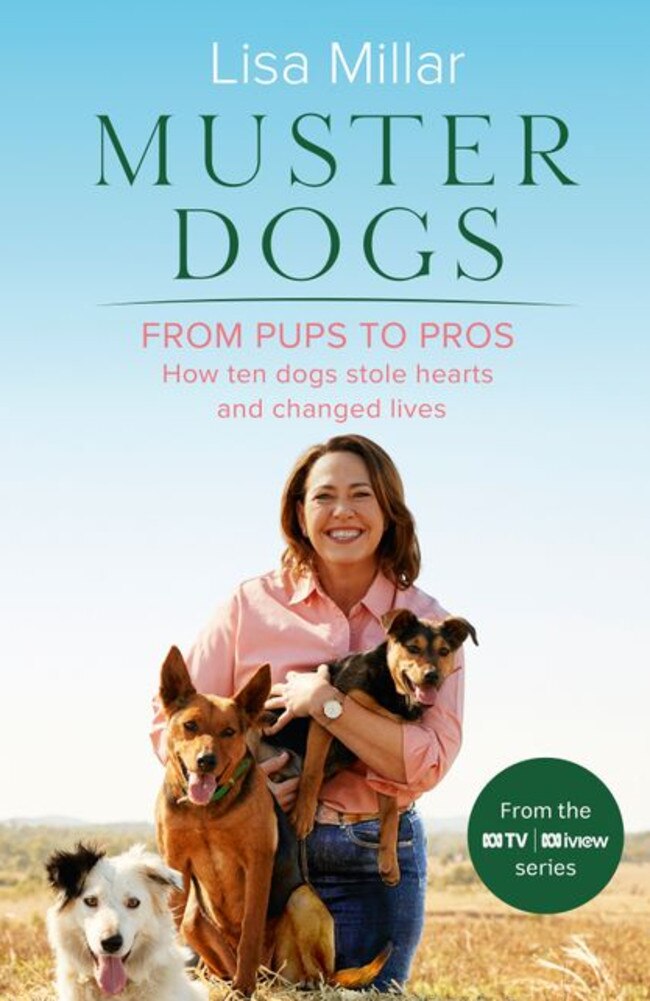
Originally published as Muster Dogs exclusive extract: Why farmers are going back to dogs and what your choice of breed means
